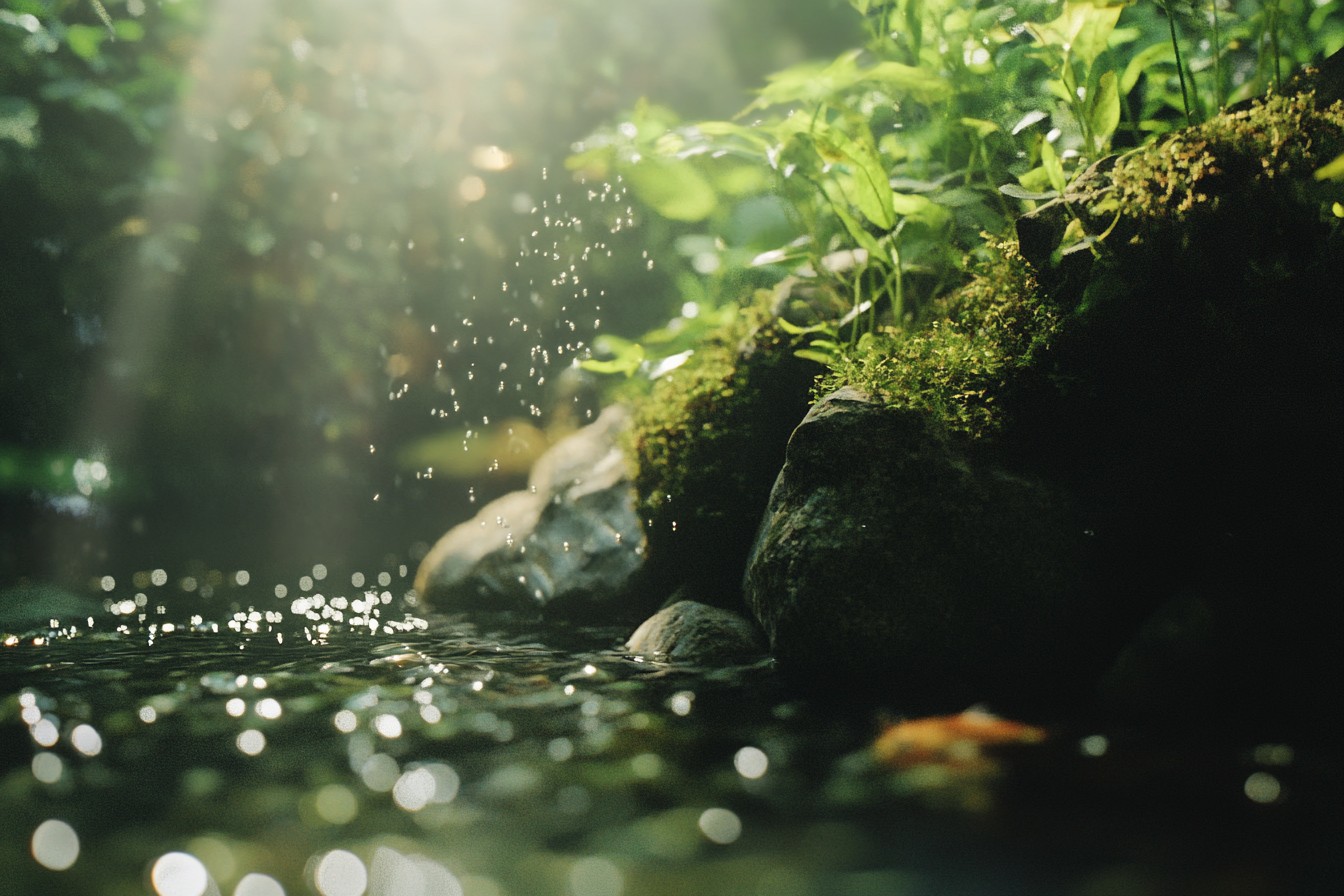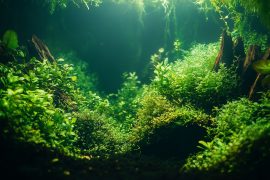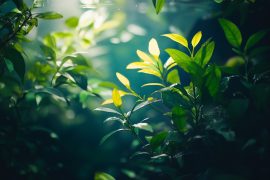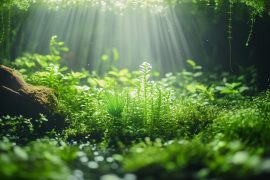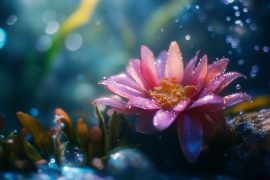I’ll never forget the first time I tried to aquascape a 50cm tank. After years of working with larger systems, I thought, “How hard could it be? It’s just a smaller canvas.” Six hours later, hunched over this supposedly “easy” project with tweezers cramping my hand and water up to my elbows, I had to admit that smaller tanks aren’t simpler—they’re just differently challenging.
That particular tank belonged to a college student who’d inherited it from a roommate and wanted something “Instagram-worthy” without breaking her budget. We settled on a 50cm cube, thinking the shape would give us flexibility. The plan was straightforward: an Iwagumi-inspired layout with three main stones, a carpet of dwarf hairgrass, and a few accent plants.
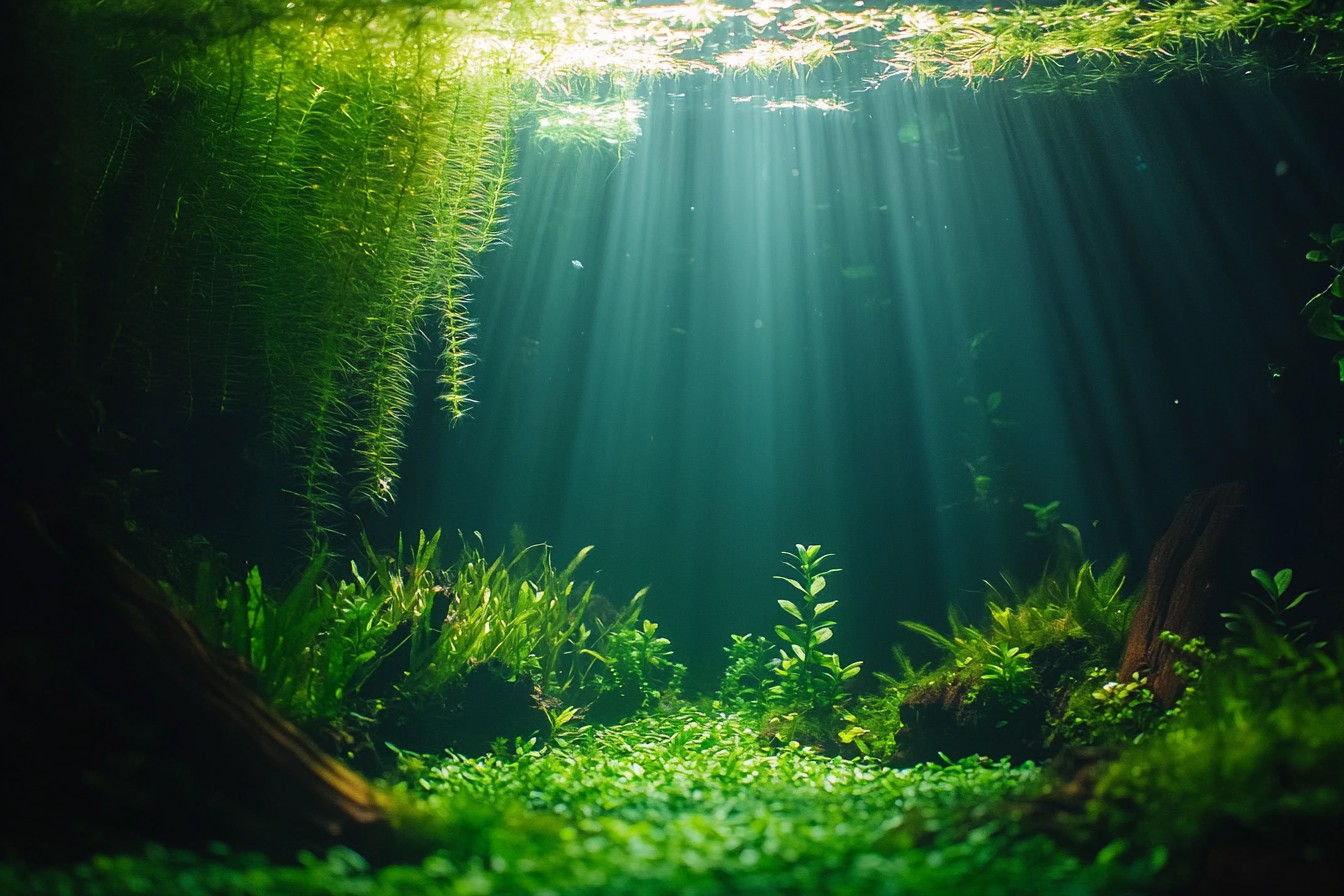
Simple, clean, easy. Except it wasn’t. Every rock placement looked wrong at first.
Too symmetrical. Too asymmetrical. Too crowded.
Too sparse. The proportions that worked in my 120cm tanks felt completely off in this smaller space. What normally took me an hour stretched into an afternoon of placing, removing, rotating, and questioning every decision until my client ordered pizza because she could see I wasn’t leaving anytime soon.
That’s the thing about 50cm tanks (roughly 20 inches for those not using metric)—they’re neither large enough to create expansive landscapes nor small enough to embrace the charm of miniaturization. They sit in a tricky middle ground that demands its own approach. But when done right, these mid-sized tanks can be perfect jewel boxes that showcase the principles of aquascaping in a manageable, accessible format.
Since that first humbling experience, I’ve set up dozens of 50cm tanks, refining my approach each time. I’ve made plenty of mistakes along the way—planting schemes that looked fantastic on paper but failed in execution, hardscape materials that overwhelmed the space, equipment choices that created more problems than they solved. But I’ve also created some of my favorite aquascapes in these mid-sized tanks, finding that their constraints often force creative solutions that I wouldn’t have considered in larger systems.
When approaching a 50cm tank, the first rule I always follow now is the rule of proportionality. Everything needs to be scaled appropriately for the size of the tank. This sounds obvious, but it’s surprisingly easy to get wrong.
The rocks or driftwood pieces that look perfect in the store often appear dramatically larger once placed in a 50cm tank. I’ve learned to select hardscape materials that are roughly 1/3 to 1/2 the height of the tank at most—anything larger threatens to overwhelm the space. I learned this lesson the hard way when setting up a 50cm tank for a local cafe.
I found this gorgeous piece of spider wood that had exactly the branch structure I’d imagined for the design. It looked reasonably sized in the shop, but once placed in the tank, it consumed nearly 70% of the space. After stubbornly trying to make it work for hours (ego is a terrible design consultant), I finally admitted defeat and broke the piece into smaller sections to create a more balanced layout.
The final result was far better than my original vision, but I could have saved myself hours of frustration by thinking about proportions from the start. For plants in 50cm tanks, I follow a similar scaling principle. Fast-growing stem plants that reach 50-60cm in height might look fantastic in a large tank but will quickly overwhelm a smaller system.
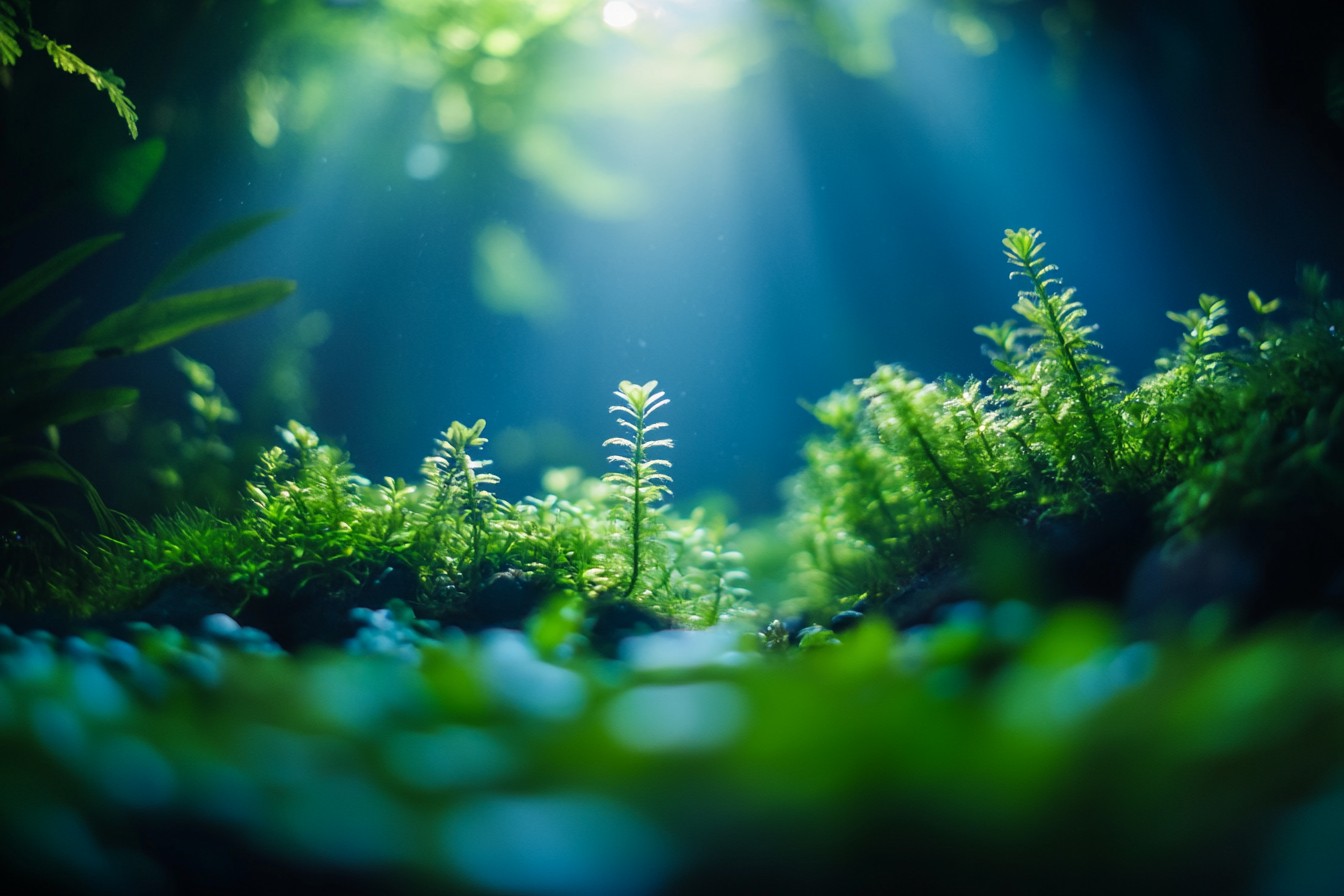
Instead, I focus on species that naturally stay smaller or can be easily maintained at an appropriate size. Cryptocoryne parva, Anubias nana ‘Petite’, Bucephalandra species, and dwarf hairgrass are perfect for these mid-sized tanks. I’m also a huge fan of Monte Carlo as a carpeting plant in 50cm systems—it establishes faster than HC ‘Cuba’ (dwarf baby tears) while providing a similar lush, green groundcover effect.
Plant density is another factor that needs careful consideration in these tanks. In larger systems, you can get away with planting more sparsely because the overall mass of plants still creates visual impact. In a 50cm tank, sparse planting often just looks unfinished rather than intentionally minimalist.
I typically plant much more densely than I would in a larger tank, particularly for background and midground plants. The initial cost is higher, but the tank establishes more quickly, and the denser planting helps prevent algae issues during the startup phase. My most successful 50cm tank was a nature aquarium style setup for my office.
I used three medium-sized pieces of driftwood arranged to create a natural focal point, with the wood extending about 40% of the way up the tank. The background was densely planted with Rotala rotundifolia ‘Green’ and Rotala H’ra, creating a gradient of color from green to red. The midground featured small groupings of Cryptocoryne wendtii ‘Tropica’ and Anubias nana on the driftwood, while the foreground had a full carpet of Monte Carlo.
The composition followed the golden ratio almost perfectly (though more by intuition than calculation), with the main branching driftwood positioned accordingly. What made this tank particularly successful was the attention to scale and proportion in every element. Nothing dominated inappropriately, and even as plants grew in and matured, the overall balance remained harmonious.
This experience taught me that in 50cm tanks, restraint often yields better results than ambition. Fewer species, carefully selected and thoughtfully arranged, create more impact than trying to include a bit of everything. Equipment selection and placement present their own challenges in 50cm tanks.
Filtration, heating, and CO2 systems (if used) need to provide adequate functionality without visually overwhelming the tank or creating disturbing flow patterns. I’ve found that small external canister filters work best for 50cm tanks—they provide sufficient filtration without taking up valuable internal space, and the flow rate can be adjusted to suit the design. For heating, I prefer external options like inline heaters when possible, but a small internal heater can be effectively hidden behind hardscape or plants if necessary.
CO2 distribution requires particular attention in these tanks. The common advice to “place the diffuser under the filter outlet” doesn’t always work well in smaller systems, where this arrangement might create too much surface agitation and gas-off valuable CO2. Instead, I typically position diffusers on the opposite side from the filter outlet, creating a gentle circular flow that distributes CO2-rich water throughout the tank without excessive surface disruption.
Small glass or ceramic diffusers with fine pore sizes work better than larger models designed for bigger tanks, producing smaller bubbles that dissolve more efficiently in the limited water volume. Maintenance routines should also be adapted for 50cm tanks. The smaller water volume means that parameters can shift more quickly than in larger systems, so regular, smaller water changes are generally more effective than infrequent larger ones.
I typically recommend 30% water changes weekly for these tanks, with careful attention to parameter stability. Fertilization dosing needs similar scaling—what works for a 120cm tank will almost certainly be too much for a 50cm system. I usually start with 1/3 to 1/2 the recommended dose and adjust based on plant response and algae growth.
Pruning requires a more frequent, lighter touch in these mid-sized tanks. Rather than waiting for plants to reach the surface and then cutting them back dramatically, I trim little and often—maybe taking just an inch off the tops of stem plants every week or two. This approach maintains the composition’s proportions and prevents the dramatic appearance changes that can occur with more aggressive pruning.
It’s easier to maintain a balanced look with regular small adjustments than to recreate it after major surgery. One maintenance aspect that’s easier in 50cm tanks is cleaning. The entire system can be reached without special tools or awkward stretching, making it simpler to clean glass, remove detritus, and access all areas of the tank.
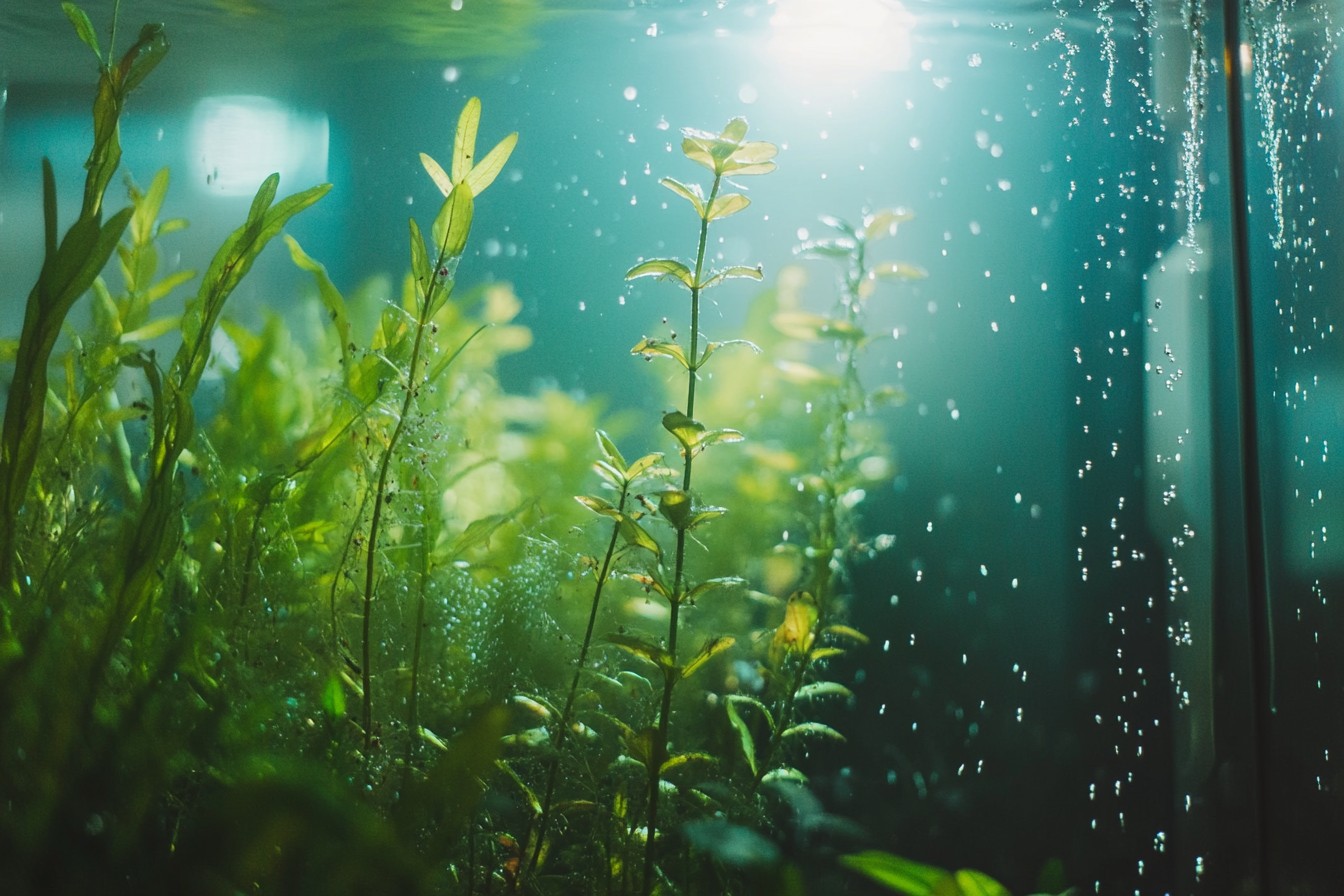
This accessibility encourages more frequent, thorough maintenance, which generally leads to healthier, more attractive aquascapes. I can clean my office 50cm tank in about 15 minutes, compared to the hour or more required for my larger home systems. Let me share another specific example that illustrates both the challenges and rewards of 50cm aquascaping.
Last year, I created a mountain stream-inspired layout for a client’s 50cm long tank (approximately 20″×12″×15″). The concept called for a pathway of sand winding between rock formations, with the hardscape suggesting the eroded banks of a stream. Plants would be used sparingly to maintain the impression of a high-energy environment where only the most tenacious species could establish themselves.
The challenge with this design was creating a sense of natural scale in such a confined space. In nature, stream beds are formed by water flow over time, creating distinctive patterns of erosion. Suggesting this natural process in a small tank requires careful attention to the size, placement, and orientation of each rock.
Too large, and the rocks would dominate the composition; too small, and they would fail to create the impression of weathered stream banks. I selected slightly rounded stones of various sizes, intentionally avoiding the dramatic, angular rocks often used in aquascaping. Each stone was positioned to suggest that water had flowed around it for years, smoothing edges and creating natural groupings.
The sand path was kept narrow at some points and allowed to widen at others, mimicking the variable flow rates of a natural stream. Small pieces of driftwood, designed to look like fallen branches caught in the stream, added another dimension to the composition. For planting, I chose species that might naturally colonize such an environment: Various Bucephalandra varieties wedged between rocks, Microsorum pteropus ‘Trident’ suggesting ferns clinging to the stream banks, and occasional small clumps of Eleocharis acicularis ‘Mini’ resembling reeds establishing in protected areas.
The planting was intentionally sparse, with approximately 70% of the substrate left as open sand. What made this project particularly challenging was the need for precise hardscape placement in such a limited space. Each rock had to be positioned to create the illusion of a larger landscape while leaving sufficient room for plant growth and maintenance access.
The margins for error were much smaller than in a larger tank—a rock placement that was off by even a centimeter could disrupt the entire composition. The completed aquascape was one of my favorites, precisely because of how it embraced the constraints of the 50cm format. Rather than trying to create a miniature version of a larger landscape, it was designed specifically for its dimensions, using the limited space to focus attention on subtle details that might be lost in a bigger tank.
The client called it “a perfect little world”—a description that captures what I love most about well-executed 50cm tanks. If you’re considering a 50cm tank for your own aquascaping adventures, I’d offer this advice: respect the format rather than fighting against it. These tanks aren’t just scaled-down versions of larger systems, nor are they glorified nano tanks.
They have their own aesthetic and practical considerations that, when properly addressed, can result in uniquely captivating aquascapes. Start with a clear concept that suits the size—not every aquascaping style translates well to this format. Iwagumi layouts can work beautifully when using appropriately sized stones.
Nature aquariums with careful attention to plant selection can create the impression of mature forest edges. Dutch-inspired arrangements can showcase a surprising variety of plants when species are chosen for their proportional compatibility. Whatever style you choose, remember that precision matters more than ambition in these tanks.
Every element should be selected and positioned with careful attention to its relationship with the whole. It’s often better to use three perfectly chosen stones than ten that don’t quite work together, or five well-chosen plant species rather than fifteen that compete for dominance. After years of working with tanks of all sizes, I’ve developed a particular fondness for these 50cm systems.
They offer enough space to create genuinely engaging aquascapes while remaining manageable in terms of cost, maintenance, and placement options. They’re large enough to be stable but small enough to allow frequent redesigns for those of us who can never quite leave well enough alone. In many ways, they represent the perfect balance between the artistic possibilities of aquascaping and the practical realities of the hobby—which, when you think about it, is what great aquascaping is all about.
